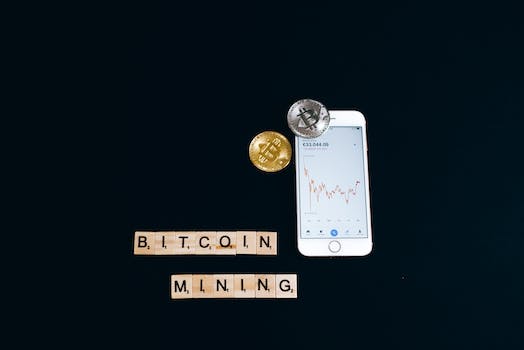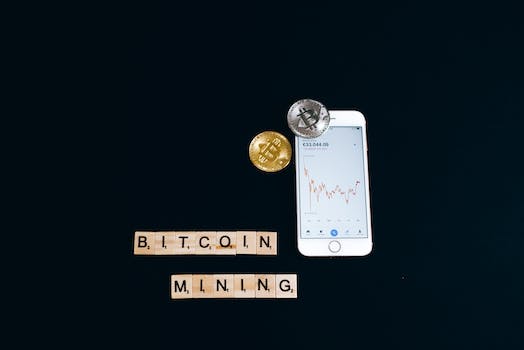Virus mining has emerged as a significant concern in the world of cryptocurrency, raising questions about its potential risks and rewards. This article delves into the impact of virus mining on cryptocurrencies, shedding light on the various dangers and benefits associated with this phenomenon. By exploring the risks and rewards, readers will gain a deeper understanding of the implications that virus mining poses to the cryptocurrency industry.
- 1. Introduction
- 1.1. What is virus mining cryptocurrency?
- 1.2. History of virus mining
- 1.3. Why is virus mining controversial?
- 1.4. Risks associated with virus mining
- 1.5. Legal implications of virus mining
- 2. Methods of Virus Mining
- 2.1. Botnets and virus mining
- 2.2. Trojan horse viruses and mining
- 2.3. Cryptojacking and virus mining
- 2.4. Drive-by mining attacks
- 2.5. Mobile device virus mining
- 3. Prevention and Protection
1. Introduction
Virus mining, also known as cryptojacking, has emerged as a significant threat in the world of cryptocurrency. It involves the unauthorized use of someone’s computer or device to mine cryptocurrencies, such as Bitcoin or Monero, without their knowledge or consent. This illicit practice has become increasingly widespread, affecting both individual users and large-scale organizations. While virus mining can lead to financial gains for the attackers, it poses severe risks and challenges for the cryptocurrency ecosystem and its users. In this article, we will delve into the impact of virus mining on cryptocurrency, exploring the potential rewards for attackers and the associated risks for individuals and businesses alike.
1.1. What is virus mining cryptocurrency?
Virus mining cryptocurrency, also known as cryptojacking, refers to the unauthorized use of someone else’s computer resources to mine cryptocurrencies. This malicious activity involves infecting a computer or network with malware that secretly utilizes the processing power of the infected device to mine cryptocurrencies like Bitcoin, Ethereum, or Monero.
Virus mining has become a significant concern in the world of cryptocurrency due to its potential for financial gain for the attackers and the adverse effects it has on the infected systems. It can occur through various means, such as malicious downloads, phishing emails, or compromised websites.
The main motivation behind virus mining is the opportunity to generate profits without having to invest in expensive mining hardware or pay for the high electricity costs associated with traditional mining operations. By hijacking the computing power of multiple infected devices, cybercriminals can mine cryptocurrencies on a large scale, increasing their chances of earning substantial rewards.
However, virus mining poses severe risks to both individuals and organizations. The infected systems experience a significant slowdown in performance, increased energy consumption, and potential hardware damage. Moreover, the attackers can access sensitive information stored on the infected devices, leading to potential data breaches and financial losses.
The impact of virus mining on cryptocurrency extends beyond the affected individuals or organizations. The widespread occurrence of cryptojacking can contribute to the overall instability of the cryptocurrency market, as it introduces an additional factor that influences the supply and demand dynamics.
In conclusion, virus mining cryptocurrency is a malicious practice that exploits the resources of unsuspecting users to mine cryptocurrencies without their consent. While it offers financial rewards for the attackers, it poses significant risks to the infected systems and the overall stability of the cryptocurrency market.
1.2. History of virus mining
Virus mining, also known as cryptojacking, is a relatively new phenomenon in the world of cryptocurrency. It involves the unauthorized use of a computer’s processing power to mine cryptocurrencies without the owner’s consent or knowledge. This malicious activity has gained traction in recent years, posing significant risks to both individuals and organizations.
The history of virus mining can be traced back to the early days of cryptocurrencies, when Bitcoin was the dominant player in the market. As the value of Bitcoin skyrocketed, cybercriminals saw an opportunity to exploit unsuspecting users and their computing resources. They developed sophisticated malware that infected computers and harnessed their processing power to mine cryptocurrencies.
Initially, virus mining involved infecting individual computers through malicious downloads, compromised websites, or phishing attacks. However, as security measures improved and users became more cautious, cybercriminals had to adapt their tactics. They started exploiting vulnerabilities in web browsers, plugins, and even websites themselves to inject mining scripts into unsuspecting users’ browsers.
The rise of virus mining can be attributed to the increasing popularity and value of cryptocurrencies. As the demand for digital currencies grew, so did the incentives for cybercriminals to engage in this illicit activity. Virus mining not only allows them to mine cryptocurrencies without investing in expensive hardware or electricity, but it also provides a way to monetize their efforts anonymously.
The impact of virus mining on cryptocurrency is two-fold. On one hand, it poses significant risks to individuals and organizations whose computers are infected. Virus mining can cause a significant slowdown in system performance, increase electricity consumption, and even damage hardware due to excessive heat generation. Moreover, the unauthorized use of computing resources can lead to privacy breaches and the theft of sensitive information.
On the other hand, virus mining has also presented rewards for cybercriminals. By exploiting the processing power of numerous infected machines, they can mine cryptocurrencies at a larger scale, potentially generating substantial profits. These profits can be further amplified by the anonymity provided by cryptocurrencies, making it difficult to trace and apprehend the perpetrators.
In conclusion, the history of virus mining is closely intertwined with the rise of cryptocurrencies. It has evolved from infecting individual computers to exploiting vulnerabilities in web browsers and websites. While virus mining presents lucrative opportunities for cybercriminals, it also poses significant risks to individuals and organizations. Understanding these risks and taking appropriate security measures is crucial in mitigating the impact of virus mining on cryptocurrency.
1.3. Why is virus mining controversial?
Virus mining, also known as cryptojacking, has become a highly controversial topic in the world of cryptocurrency. This practice involves the unauthorized use of computer resources to mine cryptocurrencies without the knowledge or consent of the device owner. While some argue that virus mining can be a lucrative way to generate income, others view it as a serious cybersecurity threat.
The controversy surrounding virus mining stems from its unethical nature and potential negative consequences. By infecting devices with mining malware, cybercriminals exploit the processing power and electricity of unsuspecting individuals or organizations. This not only slows down the infected devices but also increases their energy consumption, leading to higher electricity bills.
Moreover, virus mining poses significant security risks. Malicious mining software can compromise sensitive data and expose users to further cyberattacks. The use of infected devices to mine cryptocurrencies without consent raises concerns about privacy invasion and the violation of digital rights.
Furthermore, the profitability of virus mining is highly debatable. While it may generate profits for cybercriminals, it often comes at the expense of innocent victims who bear the costs of increased energy consumption and potential security breaches. Additionally, the increase in virus mining activities can lead to a decline in the overall efficiency and stability of cryptocurrency networks.
In conclusion, virus mining is a controversial practice with far-reaching implications. It raises ethical, security, and economic concerns that need to be addressed by both the cryptocurrency community and cybersecurity professionals. Understanding the risks and rewards associated with virus mining is crucial in developing effective measures to combat this growing threat.
1.4. Risks associated with virus mining
Virus mining, also known as cryptojacking, has emerged as a significant threat to the world of cryptocurrency. As the popularity and value of digital currencies such as Bitcoin and Ethereum have skyrocketed, so has the interest of cybercriminals in exploiting them for financial gains. Virus mining involves the unauthorized use of someone else’s computer or device to mine cryptocurrencies without their knowledge or consent.
This nefarious practice poses numerous risks to both individuals and the overall cryptocurrency ecosystem. First and foremost, virus mining consumes considerable amounts of computing power and electricity, often resulting in slower system performance and increased energy costs for the victims. Additionally, the excessive strain on hardware caused by continuous mining can lead to overheating and potential damage.
Furthermore, virus mining drains network resources and bandwidth, affecting the overall internet speed and connectivity of both individuals and organizations. This can be particularly problematic in scenarios where a large number of devices within a network are infected, causing widespread disruption.
Another significant risk associated with virus mining is the potential compromise of sensitive personal and financial information. Cybercriminals often deploy malware alongside the mining software, allowing them to gain unauthorized access to users’ private data. This can include login credentials, credit card information, and even cryptocurrency wallet details, putting victims at risk of identity theft and financial loss.
Moreover, the proliferation of virus mining can undermine the legitimacy and trustworthiness of cryptocurrencies themselves. As more and more users fall victim to cryptojacking attacks, confidence in the security and reliability of digital currencies may diminish. This, in turn, could have a negative impact on the adoption and widespread use of cryptocurrencies in the future.
In conclusion, the rise of virus mining presents a range of risks that must be acknowledged and addressed within the cryptocurrency community. From the strain on hardware and energy consumption to the compromise of personal information and the potential damage to the reputation of cryptocurrencies, the dangers posed by virus mining should not be underestimated. It is crucial for individuals, organizations, and the industry as a whole to stay vigilant, employ robust security measures, and raise awareness about this growing threat.
1.5. Legal implications of virus mining
Virus mining, also known as cryptojacking, has emerged as a significant concern in the world of cryptocurrency. This malicious practice involves hijacking computer systems to mine cryptocurrencies without the owner’s consent or knowledge. As the popularity and value of cryptocurrencies continue to rise, so does the attraction for cybercriminals to engage in virus mining.
The legal implications surrounding virus mining are complex and multifaceted. Various legal aspects come into play, including laws related to computer crimes, privacy, and intellectual property rights.
In many jurisdictions, virus mining is considered illegal and falls under the category of unauthorized access to computer systems. It is a form of cybercrime that can lead to severe penalties, including fines and imprisonment. Additionally, virus mining often involves the use of malware or malicious software, which is also illegal under most legislations.
Another legal concern is the invasion of privacy caused by virus mining. When a computer system is infected with mining malware, the user’s personal information and sensitive data may be compromised. This raises questions about the violation of privacy rights and the potential misuse of personal information by cybercriminals.
Furthermore, virus mining can infringe upon intellectual property rights. The unauthorized use of computing resources to mine cryptocurrencies without consent violates the rights of the system owner and the original creators of the mining software.
It is crucial for individuals and organizations to understand the legal risks associated with virus mining. Implementing adequate security measures, such as robust antivirus software and regular system updates, can help mitigate the chances of falling victim to virus mining attacks. Additionally, reporting any suspected virus mining activities to the relevant authorities is essential in combating this illegal practice.
In conclusion, virus mining poses significant legal implications for individuals, businesses, and society as a whole. Understanding the legal risks and taking necessary precautions are vital in safeguarding against this growing threat to the cryptocurrency ecosystem.
2. Methods of Virus Mining
Virus mining, also known as cryptojacking, is a method used by cybercriminals to illicitly mine cryptocurrencies using infected computers or devices. This technique involves injecting malicious software, commonly referred to as malware, into unsuspecting victims’ systems. Once infected, these devices become part of a network of compromised machines, known as a botnet, and are used to mine cryptocurrencies without the owner’s consent or knowledge.
There are several methods through which cybercriminals engage in virus mining. One common approach is through the use of malicious websites or online ads. These websites or ads contain hidden scripts that run in the background of a victim’s browser, utilizing the device’s processing power to mine cryptocurrencies. Users may unknowingly visit these websites or click on infected ads, leading to the installation of mining malware on their devices.
Another method involves the distribution of infected software or applications. Cybercriminals may create fake or modified versions of legitimate software, embedding mining malware within them. When users download and install these compromised applications, the mining malware is also installed onto their devices, enabling cybercriminals to mine cryptocurrencies using the device’s resources.
Additionally, email phishing campaigns can be used to distribute mining malware. Cybercriminals send deceptive emails containing infected attachments or links to malicious websites. If recipients open the attachments or click on the links, their devices can become infected with mining malware, allowing cybercriminals to exploit their computing power for cryptocurrency mining.
The impact of virus mining on cryptocurrency is significant. For cybercriminals, virus mining provides a lucrative opportunity to generate profits without the need for expensive mining hardware or electricity costs. However, for individuals and organizations affected by virus mining, the consequences can be detrimental. Infected devices may experience reduced performance, increased energy consumption, and potential hardware damage. Moreover, virus mining can also lead to privacy breaches and data theft, as the mining malware may have access to sensitive information stored on the compromised devices.
In conclusion, virus mining poses both risks and rewards in the realm of cryptocurrency. While cybercriminals exploit this method to illicitly mine cryptocurrencies, the impact on victims can be severe. It is crucial for individuals and organizations to remain vigilant and employ robust security measures to mitigate the risks associated with virus mining.
2.1. Botnets and virus mining
Botnets and virus mining are two methods commonly used for illicit cryptocurrency mining. Botnets refer to a network of infected computers or devices controlled by a hacker, often without the knowledge of the device owners. These compromised systems are then utilized to mine cryptocurrencies, such as Bitcoin or Monero, without the consent of the users. This form of virus mining can be highly profitable for the attackers as they can harness the combined processing power of multiple devices to mine cryptocurrencies at a faster rate.
On the other hand, virus mining involves infecting a victim’s computer or device with malware specifically designed to mine cryptocurrencies. This malware operates in the background, utilizing the device’s resources to mine cryptocurrencies without the user’s knowledge or permission. It can be distributed through various means, including malicious email attachments, infected websites, or drive-by downloads. Once infected, the victim’s device becomes a part of the attacker’s mining network.
Both botnets and virus mining pose significant risks to individuals, organizations, and the overall cryptocurrency ecosystem. The unauthorized use of computing resources can lead to slower device performance, increased electricity consumption, and potential hardware damage. Moreover, the proliferation of botnets and virus mining can contribute to the decentralization of mining power, potentially leading to a concentration of control in the hands of malicious actors.
While virus mining presents substantial risks, there are also potential rewards for those involved in this illicit activity. Attackers can accumulate significant amounts of cryptocurrencies without the need to invest in expensive mining hardware or pay for electricity. Additionally, the anonymity provided by cryptocurrencies makes it difficult to trace the origin of the mined coins, further incentivizing attackers to engage in virus mining.
In conclusion, botnets and virus mining are methods used by malicious actors to exploit the computing power of unsuspecting individuals for illicit cryptocurrency mining. These practices come with various risks, including compromised device performance and the concentration of mining power. However, the potential rewards, such as accumulating cryptocurrencies anonymously, make this a lucrative endeavor for attackers. It is crucial for individuals and organizations to implement strong cybersecurity measures to protect against botnets and virus mining.
2.2. Trojan horse viruses and mining
Trojan horse viruses have long been a significant threat in the digital world. These malicious programs disguise themselves as legitimate software, tricking unsuspecting users into downloading and installing them. Once inside a computer system, Trojan horse viruses can perform various malicious activities, including data theft, system damage, and unauthorized access.
However, in recent years, a new trend has emerged where cybercriminals are utilizing Trojan horse viruses for a different purpose – cryptocurrency mining. This method, known as virus mining, involves infecting a computer with a Trojan horse virus to secretly mine cryptocurrencies such as Bitcoin and Monero.
There are several methods used by virus miners to carry out their operations. One common technique is known as CPU mining, where the infected computer’s central processing unit (CPU) is utilized to solve complex mathematical problems that are essential for mining cryptocurrencies. Another method is GPU mining, which utilizes the computer’s graphics processing unit (GPU) for mining purposes. Additionally, some virus miners employ botnets, which are networks of infected computers controlled by a single entity, to collectively mine cryptocurrencies.
The impact of virus mining on cryptocurrency is significant. On the one hand, virus mining can be highly profitable for cybercriminals as they can exploit the resources of infected computers without the owners’ knowledge or consent. This can result in substantial financial gains for the attackers. On the other hand, virus mining can severely affect the performance and security of infected computers. The excessive use of computer resources, such as CPU and GPU, can lead to system slowdowns, overheating, and even hardware damage. Moreover, the presence of a Trojan horse virus opens up the possibility of further malicious activities and compromises the overall security of the computer system.
In conclusion, virus mining poses both risks and rewards in the world of cryptocurrency. While it offers financial incentives for cybercriminals, it also brings potential harm to infected computers and compromises user security. It is crucial for individuals and organizations to remain vigilant and employ robust security measures to protect against Trojan horse viruses and the impact of virus mining.
2.3. Cryptojacking and virus mining
Cryptojacking and virus mining are methods used by hackers to mine cryptocurrencies without the knowledge or consent of the device owner. These malicious activities have become increasingly prevalent in the digital world, posing significant risks to both individuals and organizations.
Virus mining, also known as crypto mining malware, involves the installation of malicious software on a target device. This software utilizes the device’s processing power to mine cryptocurrencies such as Bitcoin, Monero, or Ethereum. The mining process consumes a substantial amount of computational resources, resulting in slower device performance and increased electricity consumption.
There are several methods through which virus mining can occur. One common method is through the exploitation of software vulnerabilities. Hackers identify security flaws in operating systems, web browsers, or other software and exploit them to gain unauthorized access to devices. Once inside, they install mining malware, which runs silently in the background.
Another method is through phishing campaigns. Hackers send deceptive emails or messages to trick users into clicking on malicious links or downloading infected attachments. These actions lead to the installation of mining malware on the user’s device.
Furthermore, hackers may also infiltrate websites and inject mining scripts into their code. When unsuspecting users visit these compromised websites, their devices unknowingly become part of a mining network, contributing computational power to mine cryptocurrencies for the attackers.
The impact of virus mining on cryptocurrency is twofold. On one hand, it presents significant risks to the affected individuals or organizations. The compromised devices experience decreased performance, increased energy costs, and potential damage to hardware due to excessive strain. Moreover, the stolen computational power diverts resources away from legitimate miners, affecting the overall efficiency and profitability of cryptocurrency mining.
On the other hand, virus mining can be financially rewarding for the hackers. They can accumulate substantial amounts of cryptocurrencies without investing in expensive mining equipment or bearing the associated costs. The anonymity provided by cryptocurrencies makes it difficult to trace the attackers, further incentivizing this malicious activity.
In conclusion, cryptojacking and virus mining pose considerable risks to the cryptocurrency ecosystem. Users and organizations must remain vigilant against malware attacks and take necessary precautions to protect their devices and resources. Additionally, the development of robust cybersecurity measures and regular software updates can help mitigate the risks posed by virus mining.
2.4. Drive-by mining attacks
Drive-by mining attacks are a type of cyber attack where hackers secretly use the computing power of unsuspecting users to mine cryptocurrencies. These attacks typically occur when a user visits a compromised website or clicks on a malicious link. Without the user’s knowledge or consent, their computer’s processing power is hijacked to mine cryptocurrencies such as Bitcoin or Monero.
Methods of virus mining involve the use of malware to infect computers and exploit their resources for cryptocurrency mining. Hackers may distribute infected files through email attachments, software downloads, or compromised websites. Once the malware is executed on a victim’s computer, it runs in the background, utilizing the system’s processing power for mining operations.
Drive-by mining attacks and virus mining pose significant risks to both individual users and the overall cryptocurrency ecosystem. These attacks can lead to decreased device performance, increased energy consumption, and potential financial losses for victims. Moreover, the proliferation of such attacks can undermine the trust and stability of cryptocurrencies, impacting their value and adoption.
It is crucial for users to protect themselves from these threats by using security software, keeping their operating systems and applications up to date, and being cautious when visiting unfamiliar websites or downloading files. Additionally, website owners must implement proper security measures to prevent their sites from being compromised and used for drive-by mining attacks.
While virus mining presents risks, it also offers potential rewards for cybercriminals. By leveraging the computing power of numerous infected machines, hackers can mine cryptocurrencies without bearing the costs of hardware and electricity. This illicit activity allows them to generate profits at the expense of others. As cryptocurrency continues to gain popularity and value, it is essential for individuals, organizations, and policymakers to address the risks associated with virus mining and develop effective countermeasures to mitigate its impact.
2.5. Mobile device virus mining
Mobile device virus mining is a method of cryptocurrency mining that involves the use of malware or viruses on mobile devices to mine cryptocurrencies. This unethical practice takes advantage of the processing power and resources of infected devices without the knowledge or consent of the device owners.
There are various methods employed by cybercriminals for virus mining on mobile devices. One such method is through the use of malicious apps disguised as legitimate applications. These apps are often downloaded from unofficial sources or third-party app stores, bypassing the strict security measures of official app stores like Google Play Store or Apple App Store.
Once installed on a mobile device, these malicious apps run in the background, consuming the device’s resources to mine cryptocurrencies. They can significantly impact the device’s performance, causing it to slow down, overheat, and drain the battery quickly.
Another method of virus mining on mobile devices is through phishing attacks. Cybercriminals send deceptive emails or messages that trick users into clicking on malicious links or downloading infected files. Once the device is infected, the malware starts mining cryptocurrencies without the user’s knowledge.
The impact of virus mining on cryptocurrency is significant. While it may seem like an easy way for cybercriminals to profit, it poses several risks and challenges. Firstly, virus mining can harm the infected devices, leading to reduced performance and potential damage. It can also compromise the privacy and security of users, as the malware may have access to sensitive information stored on the device.
Furthermore, virus mining contributes to the overall instability of the cryptocurrency market. The increased mining activities can disrupt the equilibrium between supply and demand, leading to price fluctuations and affecting traders and investors. Additionally, virus mining can undermine the efforts of legitimate miners who follow ethical practices and invest in expensive hardware to mine cryptocurrencies.
It is essential for users to be cautious and take preventive measures to protect their mobile devices from virus mining. This includes only downloading apps from official app stores, regularly updating device software, and installing reputable antivirus software. By staying informed and vigilant, users can minimize the risks associated with virus mining and help maintain the integrity of the cryptocurrency ecosystem.
3. Prevention and Protection
In order to prevent and protect against the impact of virus mining on cryptocurrency, it is important to implement various security measures. One of the key steps is to ensure that all software and operating systems are up to date with the latest security patches. Regularly updating and patching vulnerabilities helps to minimize the risk of exploitation by viruses and malware.
Additionally, using strong and unique passwords for cryptocurrency wallets and accounts is crucial. Weak passwords can easily be cracked, providing unauthorized access to sensitive information and funds. It is recommended to use a combination of uppercase and lowercase letters, numbers, and special characters for maximum security.
Furthermore, enabling two-factor authentication (2FA) adds an extra layer of security to cryptocurrency accounts. This involves a second step of verification, such as a unique code sent to a mobile device, in addition to the password. By requiring this additional authentication, the risk of unauthorized access is significantly reduced.
Regularly backing up cryptocurrency wallets is another important preventive measure. Backups should be stored securely, preferably offline or on a separate device, to protect against data loss or theft. In the event of a security breach, having a backup ensures that funds can be recovered.
Lastly, it is crucial to exercise caution when downloading and installing software related to cryptocurrency. It is recommended to only use trusted sources and verify the authenticity of the software before installation. Many viruses and malware are disguised as legitimate cryptocurrency tools, so it is important to be vigilant and conduct thorough research before proceeding.
By implementing these prevention and protection measures, cryptocurrency users can minimize the risks associated with virus mining and ensure the safety of their assets.
3.1. Using antivirus software
Antivirus software plays a crucial role in preventing and protecting against the growing threat of virus mining in the realm of cryptocurrency. As the popularity and value of cryptocurrencies continue to rise, so does the interest of cybercriminals in exploiting this digital currency for their own gain. Virus mining, also known as cryptojacking, involves using malware to hijack a computer’s processing power to mine cryptocurrencies without the owner’s consent.
By utilizing antivirus software, individuals and businesses can fortify their systems against these stealthy attacks. Antivirus programs are specifically designed to detect and eliminate various types of malware, including those used for virus mining. They constantly scan for malicious files and activities, providing real-time protection and preventing unauthorized crypto mining operations.
Moreover, antivirus software often includes features like web protection and browser extensions that can block access to websites and scripts known for distributing malware. These additional layers of defense help safeguard against accidental downloads or visits to infected websites that could inadvertently initiate virus mining activities.
It is important to keep antivirus software up to date, as new strains of malware and virus mining techniques are continually evolving. Regular updates ensure that the software has the latest virus definitions and detection algorithms, enhancing its ability to recognize and neutralize emerging threats.
In conclusion, antivirus software is an essential tool for preventing and protecting against virus mining in the cryptocurrency landscape. Its proactive approach to detecting and eliminating malware helps users maintain the security and integrity of their digital assets, reducing the risks associated with unauthorized crypto mining.
3.2. Regular software updates
Regular software updates are crucial for the prevention and protection against virus mining on cryptocurrency systems. As technology evolves, so do the methods used by hackers to exploit vulnerabilities in software and gain unauthorized access to mining activities. By regularly updating software, cryptocurrency users can ensure that they have the latest security patches and fixes to guard against such threats.
These updates often include enhancements to the mining software itself, making it more resilient to attacks and capable of detecting and preventing virus mining attempts. Additionally, software updates may address any existing vulnerabilities or weaknesses that could be exploited by malicious actors.
Furthermore, keeping software up to date helps to maintain the overall health and performance of the cryptocurrency system. Outdated software can lead to inefficiencies, crashes, or even complete system failures, which can potentially result in financial losses for cryptocurrency miners.
In conclusion, regular software updates play a critical role in the prevention and protection against virus mining on cryptocurrency networks. By staying vigilant and promptly installing the latest updates, miners can mitigate the risks associated with this emerging threat and ensure the security and stability of their mining operations.
3.3. Avoiding suspicious downloads
When it comes to preventing and protecting your cryptocurrency from virus mining, one crucial step is to avoid suspicious downloads. Downloading files from untrusted sources can pose a significant risk to your computer’s security and make it vulnerable to virus mining attacks.
To stay safe, it is essential to only download software, applications, and files from reputable and verified sources. This includes official websites, trusted app stores, and well-known repositories. Be cautious of downloading files from unknown websites, peer-to-peer networks, or suspicious email attachments, as they are often used as vectors for spreading malware.
Additionally, always ensure that your antivirus software is up to date and running efficiently. Regularly scan your computer for any malware or viruses that might have slipped through your defenses. Keeping your operating system and applications updated with the latest security patches is also crucial in mitigating the risk of virus mining attacks.
By being vigilant and adopting safe browsing habits, you can significantly reduce the chances of falling victim to virus mining threats and better protect your cryptocurrency investments.
3.4. Enabling firewalls and intrusion detection systems
Enabling firewalls and intrusion detection systems (IDS) is crucial in preventing and protecting against the risks of virus mining on cryptocurrency. Firewalls act as a barrier between a trusted internal network and the external network, monitoring and controlling incoming and outgoing network traffic. By setting up firewalls, organizations can filter out malicious traffic and prevent unauthorized access to their systems.
Intrusion detection systems, on the other hand, actively monitor network traffic and detect any suspicious activities or potential security breaches. They can identify patterns or behaviors that indicate the presence of malware or unauthorized access attempts. IDSs provide real-time alerts and notifications to system administrators, enabling them to take immediate action and mitigate potential threats.
By implementing firewalls and IDSs, cryptocurrency users and organizations can significantly reduce the risk of virus mining. These security measures create an additional layer of defense by blocking or detecting and responding to malicious activities. Furthermore, firewalls and IDSs can also help in identifying vulnerabilities in the system and implementing necessary patches or updates to enhance overall security.
It is important to note that firewalls and IDSs should be regularly updated and maintained to ensure their effectiveness against evolving threats. Additionally, organizations should consider adopting other security practices, such as strong passwords, multi-factor authentication, and regular security audits, to further fortify their defenses against virus mining and other cyber threats.
3.5. Educating users about virus mining threats
Educating users about virus mining threats is crucial in preventing and protecting against the risks associated with cryptocurrency mining. As the popularity of cryptocurrencies increases, so does the prevalence of virus mining. Virus mining, also known as cryptojacking, involves hackers infecting users’ computers or mobile devices with malware that secretly mines cryptocurrencies without their knowledge or consent.
To prevent falling victim to virus mining, users need to be aware of the signs and symptoms of cryptojacking. These may include sudden slowdowns in computer performance, increased electricity bills, and overheating of devices. Additionally, users should regularly update their operating systems, antivirus software, and web browsers to patch potential vulnerabilities that could be exploited by virus miners.
Protecting against virus mining requires implementing robust security measures. Users should consider using ad-blockers and anti-cryptojacking browser extensions to block malicious mining scripts. It is also essential to exercise caution when visiting websites and downloading files, as they could be infected with malware. Enabling two-factor authentication and using strong, unique passwords for cryptocurrency wallets and accounts can further enhance protection against unauthorized access and potential mining attacks.
Furthermore, educating users about the importance of avoiding suspicious links, emails, and downloads can significantly reduce the risk of virus mining. By staying vigilant and practicing safe browsing habits, users can minimize the chances of falling victim to cryptojacking and protect their valuable cryptocurrencies.
Conclusion
In conclusion, virus mining has both risks and rewards for the cryptocurrency industry. While it can provide a significant boost in mining power and potentially increase profits, it also poses serious security threats and can damage the reputation of cryptocurrencies. It is crucial for crypto users and developers to be vigilant and implement strong security measures to mitigate the risks associated with virus mining.





